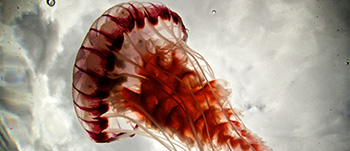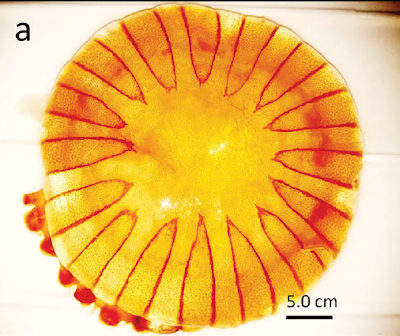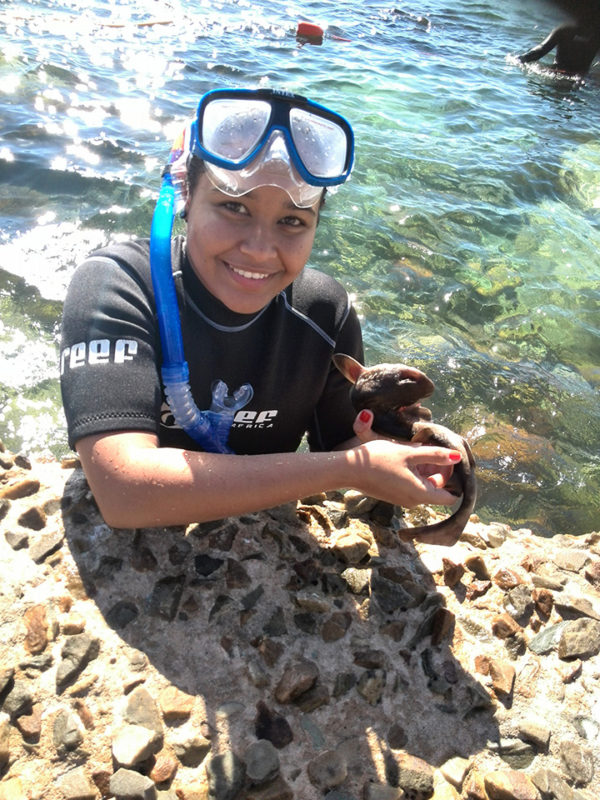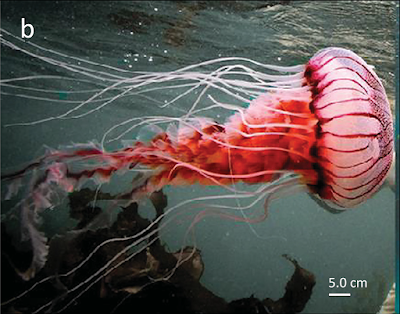There are many species of jellyfish known to man, and a marine biologist and taxonomist from the University of the Western Cape (UWC) has discovered a new species right here in the Western Cape.
“Historically, two species of Chrysaora jellyfish are known from the Benguela Current Ecosystem: C.fulgida and C. africana. However, a third morphotype is now seen which bears a resemblance to both,” says Verena Ras, who discovered the species. “And now, using a comprehensive collaborative approach analysing statistical and molecular data, we’ve officially discovered a new species of jellyfish in South African waters: Chrysaora agulhensis.”

The species, which is believed to be endemic to the Agulhas current system is described from 31 specimens, mostly collected in False Bay in the Western Cape.
The species can be separated in the field by a combination of tentacle/lappet number and shape, colour patterns, and the form of the oral arms.
Ras is currently completing a PhD in Marine Genetics at UWC, looking at the identities and population biology of West African jellyfish. She has been working on jellies for eight years already, having started some of the work as an honours student and continuing as part of her Master’s at UWC in the Biodiversity and Conservation Biology Department.

“Data for African jellyfish species – or species found along the West and East African coastlines, rather – is relatively non-existent,” she explains. “The main purposes of my work among the broader research conducted within our group is to begin to ‘fill this gap’ by providing updated descriptions of African species, as well as barcoding their DNA and investigating their population biology and ecology.”
Chrysaora has always been a highly enigmatic genus, and sorting out the species required a coordinated effort combining the fields of marine biology, genomics, oceanography and more, under the leadership of UWC’s Professor Mark Gibbons. Gibbons is Ras’ marine biology mentor.

“We’re a wonderfully multifaceted team, all with our own areas of expertise ranging from molecular biology to oceanography,” Ras explains, “so nothing ever becomes monotonous, and there’s always something new to learn or investigate.”
The inherent interdisciplinary nature of the work has kept Ras enthralled – and on her toes.
“In my short time involved in this research I’ve been trained in conservation techniques, marine biology, histology, genetics, molecular biology, microscopy, and biostatistics, to name a few,” she says. “This keeps the work interesting, and allows me to transfer skills to many other domains. I’m now drawing on skills in GIS (geographical information systems) and programming to answer some of our current questions.”
The study, appropriately titled There are three species of Chrysaora (Scyphozoa: Discomedusae) in the Benguela upwelling ecosystem, not two, is her first official published academic article.
”It took me four years to complete my BSc, three years to complete my MSc and I am in the fourth year of my PhD, because I had to work multiple jobs to pay for my studies – and although I’ve been in research for years this is my first publication,” she says. ”So it’s never too late – just keep going, and let’s see what you can do!”
Source: UWC
Picture: Supplied






